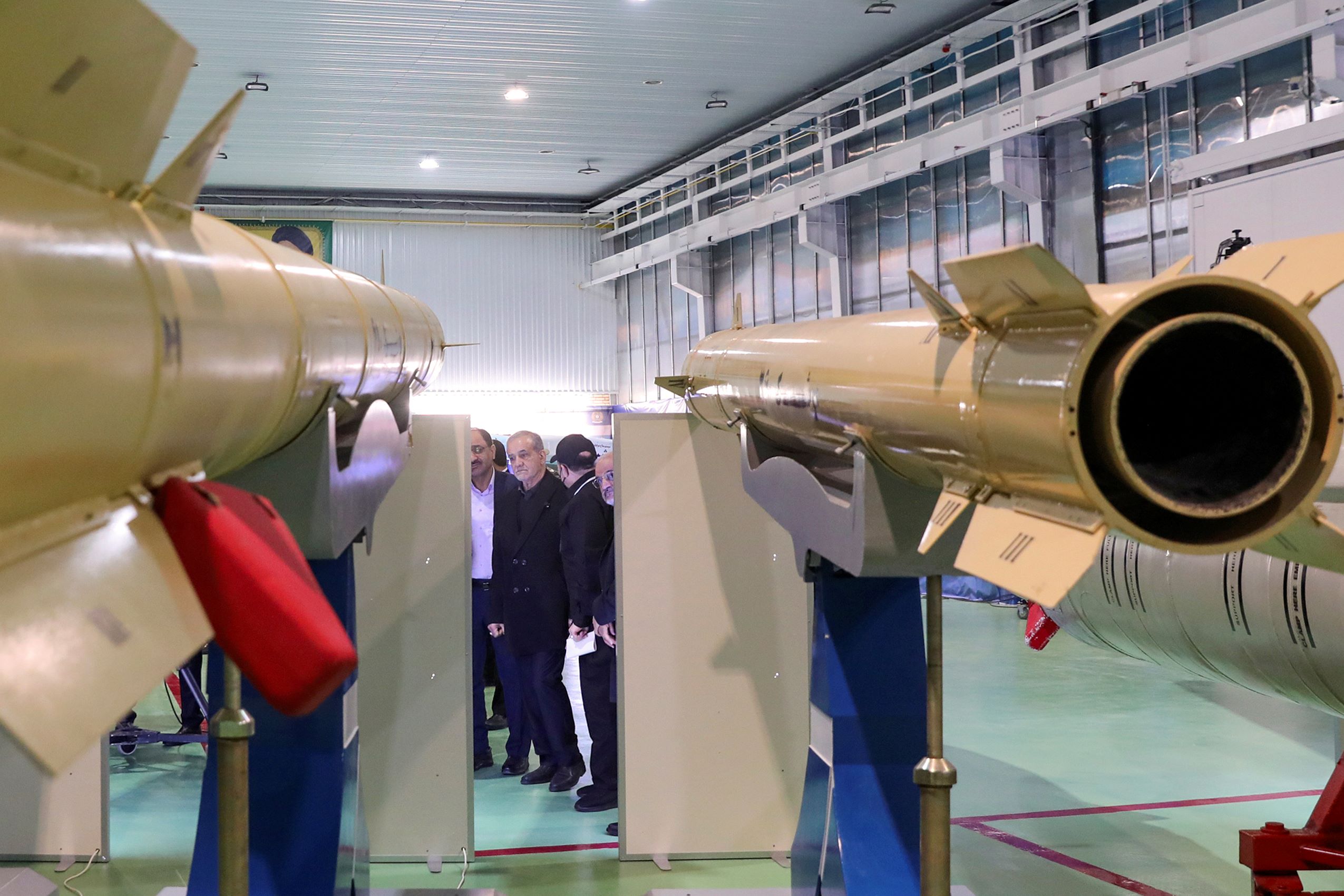
TEHRAN - Iran on Sunday unveiled a new homegrown ballistic missile with an operational range of 1,700 km, the semi-official Fars news agency reported.
The missile, dubbed "Etemad" (Trust), was unveiled during President Masoud Pezeshkian's visit to an exhibition of the Defense Ministry's aerospace industries in the capital Tehran, the report said.
With a length of 16 meters and a diameter of 1.25 meters, the missile is equipped with a precision-guided warhead, according to Fars.
READ MORE: Iran's IRGC navy unveils underground cruise missile base
Speaking during the visit, Pezeshkian stressed that Iran's defense capabilities had reached such a high level that they could dissuade the "enemies" from even thinking of attacking the country, according to a statement published on the website of his office.
He added that Iran's expanded defense capabilities aimed at safeguarding national security by preventing any act of aggression, and the country did not seek to attack other states.
Iran on Sunday also unveiled three new domestically developed satellites to mark its National Space Technology Day, the official news agency IRNA reported.
The satellites, namely Navak-1, Pars-2, and an upgraded model of Pars-1, were unveiled in a ceremony attended by President Pezeshkian, Minister of Information and Communications Technology Seyyed Sattar Hashemi, as well as a number of cabinet members, officials, and military commanders, the report said.
READ MORE: Iran says no message received from US for nuclear talks
Developed by the Iranian Space Research Center, the Navak-1 communications satellite is designed to test the function of an improved version of the homegrown Simorgh launch vehicle in the near future. The carrier is expected to put the satellite into an elliptic orbit, according to IRNA.

Weighing approximately 34 kg, Navak-1 is equipped with a dosimetry payload to measure cosmic rays, the report said, adding the satellite has a magnetometer sensor to measure the Earth's electromagnetic field.
According to IRNA, the Pars-2 remote-sensing satellite weighs 150 kg and is equipped with two imaging payloads with two different homegrown linear position sensors.
ALSO READ: Commander: Iranian drones equipped with homegrown AI-powered missiles
The satellite features a propeller and is capable of carrying out diverse missions in the fields of environmental monitoring, forestry, natural disaster response, and urban management.
The upgraded model of Pars-1 remote-sensing satellite, weighing under 150 kg, has three imaging payloads: multispectral, short-wave infrared, and thermal infrared, according to IRNA.
The satellite is powered by energy generated from its gallium arsenide solar cells, according to the report. The first model of the satellite, weighing 134 kg, was launched on Feb 29, 2024, aboard a Russian Soyuz rocket from the Vostochny space base.
ALSO READ: President: Iran seeks peace, not war, while rejecting external threats
Speaking at another ceremony in Tehran on Sunday to mark the occasion, Iranian Defense Minister Aziz Nasirzadeh said the country plans to conduct two space launches in the coming weeks, before the end of the current Iranian calendar year on March 20.


